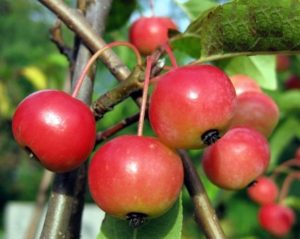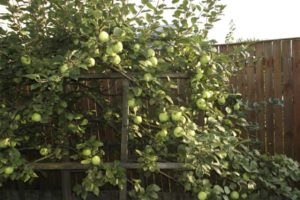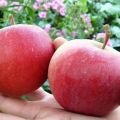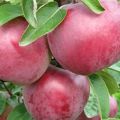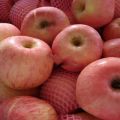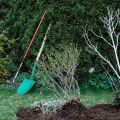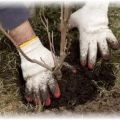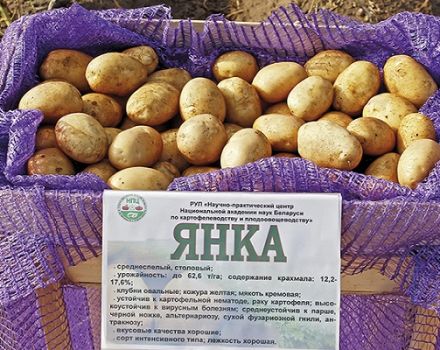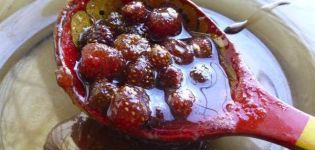Description and characteristics of the Paradise apples variety, planting, cultivation and care
Now the paradise small apple is again becoming popular, which with the advent of large-fruited varieties turned out to be unclaimed and forgotten by gardeners. Breeders have bred many varieties of these unusual trees, which are grown not only as fruit trees, but also as decorative ones. If you do not go into history, you can take the district for the latest development of specialists and decorate your garden with it.
History of appearance
Historically, all small-fruited varieties of this tree are called paradise apples. To date, more than a hundred of its varieties are known. Most of all, summer residents fell in love with dwarf varieties, characterized by high yields.
The Nizkaya apple tree was taken as a basis for breeding these varieties, the distribution area of which is considered to be Central Asian and South European countries. A great contribution to the breeding of this species was made by Czech scientists, who, on the basis of the wild, Katka and the Champion, received a novelty with excellent characteristics.
Pros and cons of the variety
The advantages of heavenly apples are:
- rich content of vitamin C in fruits;
- universal application of the harvested crop;
- decorative properties of wood;
- durability;
- high frost resistance;
- excellent yield.

Of the shortcomings, experienced gardeners distinguish only small sizes of fruits, which have to be removed for a very long time, even from dwarf trees.
External description
Paradise apple trees are easy to recognize by their external distinctive characteristics.
Tree height and crown size
An adult tree of the same type of crayfish can vary significantly in size. It depends on the subspecies to which it belongs. Paradise apple trees are never tall. The crone of crayfish is medium or spreading. Columnar types with a narrow and high crown are rare.

Root system
The root system of paradise apple trees goes deep into the ground, so that in a harsh winter the tree does not need additional shelter and easily tolerates even the most severe cold.
Technical specifications
Various subspecies of heavenly apples differ not only in appearance, but also in technical parameters.
Resistance to subzero temperatures
Certain subspecies of crayfish easily tolerate frosts down to -40 ° C and a blizzard, while others are sensitive to harsh climatic conditions and drafts.
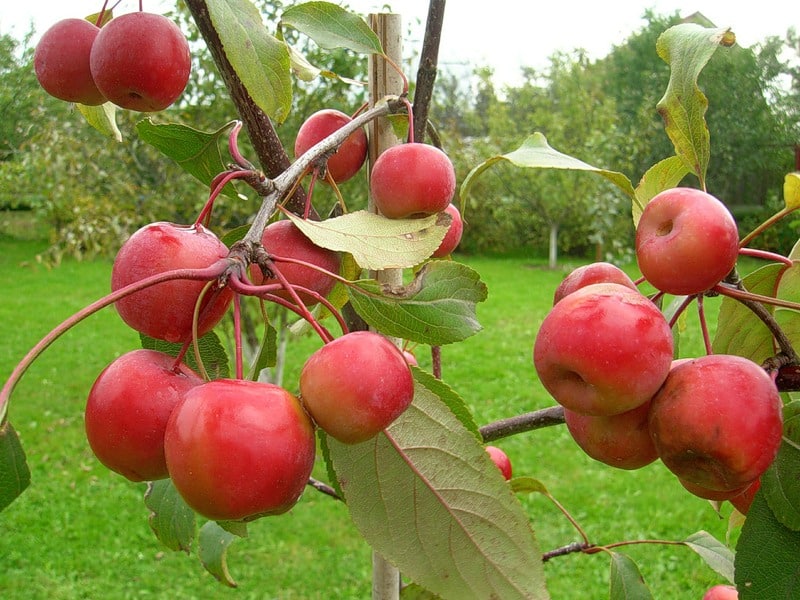
Susceptibility to disease and infection
The apple of paradise differs from other species in its increased resistance to common diseases, in particular to scab and powdery mildew.
Pollinating varieties
Most of the regions are self-fertile, but it is better if other varieties of apple trees are planted on the site. In the process of cross-pollination, not only the yield increases, but also the taste and marketability of the harvested crop. In addition, the paradise apple trees themselves act as excellent pollinators.
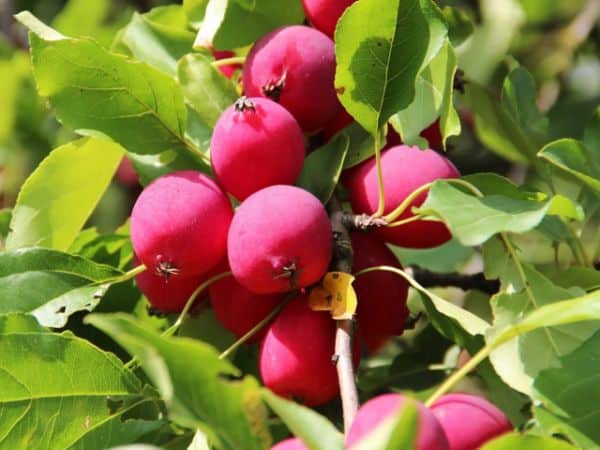
Ripening and fruiting
Fruiting of paradise apples occurs 4 years after planting a seedling on the site. This applies to those cases when the tree has been grafted onto a finished seed stock. If it was originally grown from seeds, then the process of giving back the fruit may be delayed.
Raikas are considered summer apples, therefore ripening and harvesting falls on July-August.
Productivity and taste of apples
Paradise apples are distinguished by their original taste, which is in no way similar to the classic one. Light acidity and astringency distinguish them from other similar fruits. The yield of an adult paradise apple tree is about 30 kg of ripe fruits. Depending on the subspecies, this indicator may vary slightly.
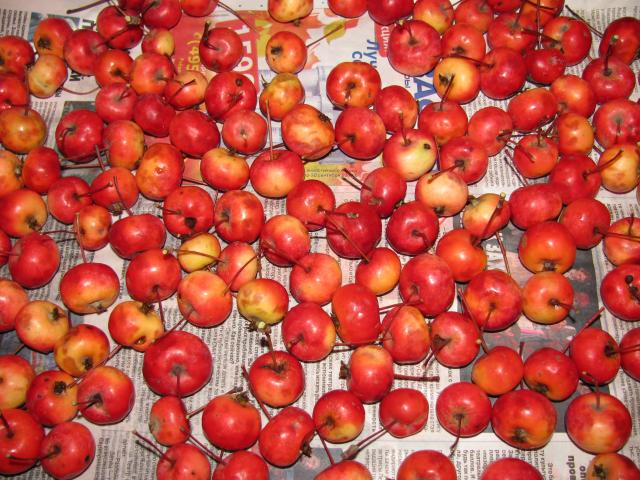
Use as a rootstock
Seedlings of paradise apple trees are widely used as a rootstock, on the basis of which dwarf or semi-dwarf trees are grown.
In which regions is it preferable to plant
Due to their high frost resistance, raikas are grown absolutely in all regions of our country and neighboring countries:
- Ukraine;
- Kazakhstan;
- Belarus;
- Russia.
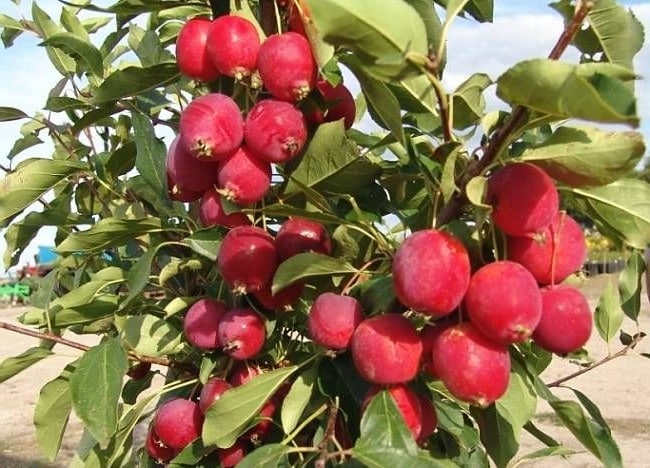
Features of growing "paradise apples"
There are some features that are taken into account when cultivating crayfish on your site.
Preparation of young seedlings
Any corner of the garden, even partial shade or shade, is suitable for planting a paradise apple seedling. The roots of a young tree should be strong, well developed, branched. No mechanical damage is allowed on the barrel. Preference is given to seedlings with a non-thickened crown. Depending on the selected subspecies, the branches are arranged vertically or bend, as if fading. The buds should never be dry.

To plant the paradise apple tree, dig a hole in proportion to the size of the root system of the seedling. He does not need to prepare the soil of a special composition. A young tree is simply placed in the hole, covered with soil, tamped and watered well. It is advisable to hammer a wooden peg-support 60 cm high into the hole, to which the seedling is subsequently tied. Once the moisture is absorbed, the soil around the apple tree is mulched.
Disembarkation scheme and timing
Paradise apple trees are planted both in spring and autumn. In the spring period, work is planned for mid-April - May, and in the autumn - for October. The planting scheme for paradise apple trees depends on the selected subspecies. A distance of 4-5 meters is left between tall trees, and 2.5-3 meters between dwarf or columnar trees. The same gap is maintained between the districts and neighboring fruit trees or shrubs on the site.
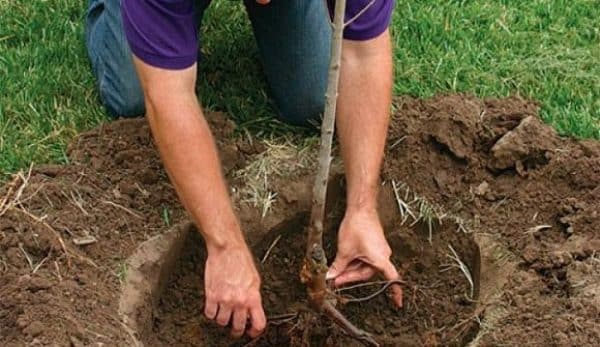
Young and mature tree care
Proper care is the key to a rich and stable harvest.
Watering
Paradise apple trees do not need abundant watering. In dry summer conditions, they are irrigated once a week at the rate of 2-3 buckets of water per 1 adult tree.
Fertilizer
In the spring, as soon as the snow melted, a complex mineral fertilizer with a nitrogen content is introduced into the near-stem circle.During the period of ovary formation, the tree is fed with preparations containing magnesium and potassium. Organic matter, compost, humus are also introduced.
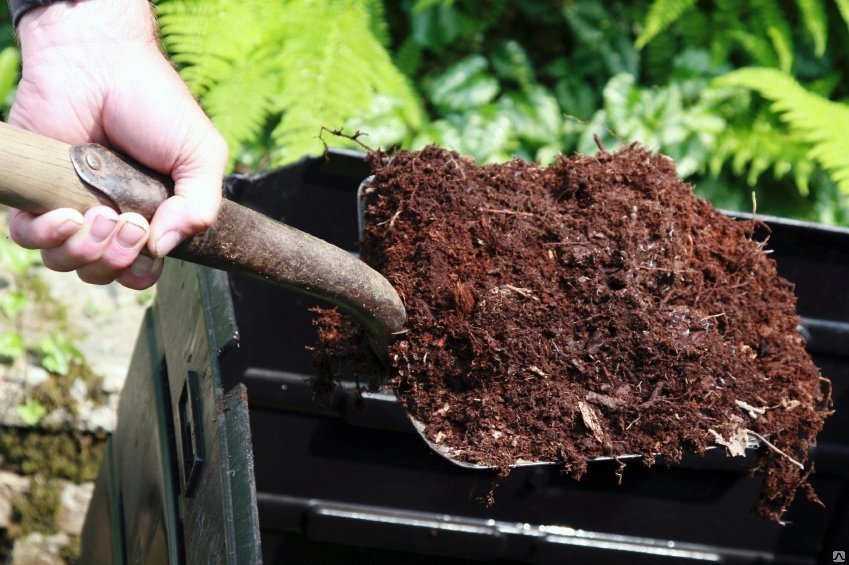
Loosening the soil
Timely loosening of the soil after watering or heavy rainfall provides oxygen to the roots, and also prevents the development of fungal diseases. This is done carefully and not too deep so as not to injure the roots that are close to the surface of the earth.
Pruning
In the first few years of life, paradise apple trees are annually pruned by 0.2-0.3 m branches. Also, every season, trees are sanitized pruning with the removal of dry, damaged, diseased or broken branches.

Seasonal prevention
Despite the increased resistance of paradise apple trees to the main types of diseases, experienced gardeners recommend seasonal processing with Bordeaux mixture. In spring and autumn, tree trunks are whitewashed with lime solution.
Shelter for the winter
In late autumn, when frost begins, the trunk of the paradise apple tree is wrapped in a moisture-permeable material. They do this to protect against rodents, which in the cold season are able to gnaw the bark of a tree and destroy it. The district does not need additional shelter from the cold for the winter.
